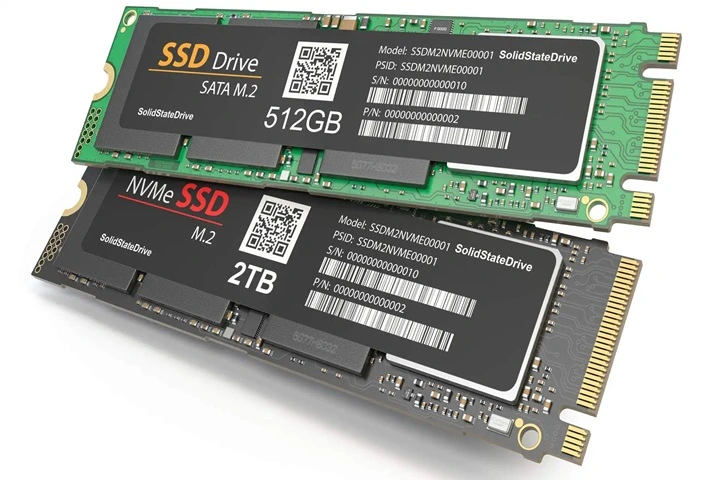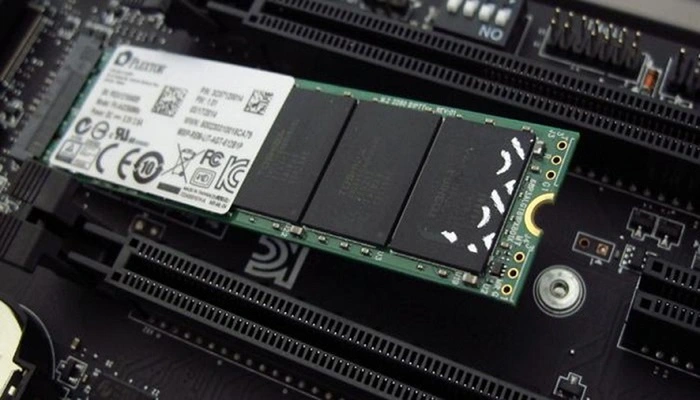Solid-state drives (SSDs) have completely changed the way we think about computer storage. They’ve made our devices faster, more reliable, and more efficient.
If you’re looking to boost your system’s speed, M.2-SSDs are an excellent choice. In this article, we will explore how M.2-SSDs can supercharge your computer’s speed and why you should consider upgrading to one.
Introduction: Overview of SSDs and Related Technologies
Before we dive deep into M&2 SSDs, it’s important to understand what SSDs are and why they matter in the world of computing.
SSDs are storage devices that use flash memory to store data. Unlike HDDs (hard disk drives), SSDs don’t have any moving parts, which makes them faster and more durable.
This lack of moving components is a key reason why SSDs outperform HDDs in almost every area, especially in terms of speed.
The M.2 interface is a specific standard for internal expansion cards that allows computers to take advantage of SSDs and other high-speed storage devices.
It was designed to replace older interfaces, like mSATA, and offers much faster speeds and more flexibility.M.2 SSDs are increasingly popular because of their small size and outstanding performance.
They’re used in everything from laptops and ultrabooks to high-performance gaming PCs and data centers. So, how do M.2 SSDs improve speed, and why should you care?
Detailed Explanation of SSD Types
There are several types of SSDs, and understanding them is essential when choosing the right one for your needs. Let’s break down some of the most common SSD types.
Industrial Enterprise PCIe® Gen4 NVMe SSDs
PCIe (Peripheral Component Interconnect Express) is a high-speed data transfer standard, and PCIe Gen4 SSDs are currently some of the fastest storage options available.
They provide data transfer rates that are much higher than older SATA drives, making them perfect for high-demand applications, such as video editing, gaming, and enterprise data storage.
PCIe® Gen4 NVMe E1.S SSD
The E1.S SSD is a specific form factor used in enterprise applications. It supports PCIe Gen4 NVMe, which provides faster speeds than SATA. It’s designed for applications that require high storage capacities and high-speed data transfer, such as cloud storage and server environments.
PCIe® Gen4 NVMe M.2-SSD
The M.2. form factor is extremely popular for consumer devices. A PCIe Gen4 NVMe M.2 SSD can transfer data at incredible speeds.
This is a game-changer for gamers and professionals who require fast load times and efficient storage for heavy applications.
Compared to SATA, the M.2. PCIe SSDs are faster, with data transfer rates that can easily surpass 7,000 MB/s.
PCIe® Gen3 NVMe M&2 SSD
Although PCIe Gen4 is the newer standard, PCIe Gen3 SSDs still offer great performance at a more affordable price.
These M.2 SSDs support up to PCIe x4 lanes, ensuring fast data transfer rates and low latency.
SATA III M.2 SSD
While not as fast as PCIe versions, SATA III M.2 SSDs still provide a significant speed boost over traditional HDDs.
If you’re upgrading from an HDD or don’t need ultra-fast performance, SATA III M.2- SSDs offer a great balance of cost and speed.
SATA III 2.5″ SSD
This is the most traditional form of SATA SSDs. 2.5″ SSDs are great for those who want to upgrade from an HDD without switching to M.2 or PCIe.
They are slower than M&2 SSDs, but they still provide a huge performance improvement over HDDs.
SATA III mSATA SSD
mSATA is a smaller version of the SATA SSD and was used in older laptops and devices. While it’s being replaced by M.2 drives, it’s still a valid option for older systems.
USB-Based SSDs
Not all SSDs connect directly to the motherboard. Some USB-based SSDs are used for portable storage solutions. These drives use the USB interface to connect to your computer.
USB 3.2 NANODURA Dual and USB 2.0 NANODURA offer a reliable way to store data externally. They’re commonly used for backups or moving large files between systems, but they don’t offer the same performance as PCIe or SATA-based drives.
Managed NAND Solutions
In addition to M.2 SSDs, some solutions use managed NAND. e.MMC automotive and e.MMC industrial are designed for embedded systems storage and offer a compact and efficient way to handle data storage in mobile devices and other small form-factor systems.
SecurStor-enabled SSDs provide encryption for added security, which is especially important for data-sensitive applications like financial services and healthcare.
Memory Cards
Memory cards such as SD, microSD, CFexpress, and CompactFlash are often used in cameras and other portable devices. These cards have specific performance capabilities and may support SATA or PCIe connections.
For high-speed applications, PCIe Gen4 NVMe CFexpress cards are the best option. These cards provide incredibly fast data transfer speeds, making them ideal for video recording, photography, and other professional uses.
DRAM Modules
The RAM in your computer also plays a crucial role in overall performance. DDR5, DDR4, and DDR3 are the main types of DRAM modules used in computers.
DDR5 is the latest generation and offers significant speed improvements over its predecessors. If you want faster data access for your M&2 SSD, having the right DRAM module installed can make a big difference.
Additional Products & Solutions
Many additional products and solutions can help optimize the performance of your M.2- SSD. M.2. adapters allow you to connect M.2- SSDs to different slots or systems. Similarly, M.2. enclosures are used to protect and cool your SSD, ensuring it performs at its best over time.
Choosing the Right SSD for Your Needs
Choosing the right M.2 SSD depends on your specific needs. PCIe NVMe SSDs are faster and ideal for gaming or professional workloads, while SATA-based M.2- SSDs offer a more budget-friendly solution with moderate performance.
When comparing M.2- SSDs with PCIe NVMe or SATA, keep in mind that M.2. PCIe SSDs provide the best data transfer rates, especially for tasks like video editing or gaming. M.2. slots and M.2.
key types will also determine what SSD works with your system, so make sure to verify M.2. compatibility before purchasing.
Buying Guide and Warranty
When purchasing your M.2- SSD, it’s important to consider where to buy and what kind of warranty the product comes with.
Trusted online retailers and manufacturers like Samsung or Western Digital offer excellent customer service and warranties. Additionally, look for RMA processes that make returns or exchanges simple.
FAQs
Q. What is the lifespan of an SSD?
A. The lifespan of an SSD is typically around 5 to 10 years, depending on the type of NAND and how much data is written to it.
Q. Can I upgrade my laptop’s storage to an M.2 SSD?
A. Yes, as long as your laptop has an M.2. slot and supports the M.2. interface.
Q. What’s the difference between SATA and NVMe?
A. NVMe is much faster than SATA. M.2. NVMe SSDs can achieve speeds up to 5x faster than SATA SSDs, making them ideal for high-performance applications.
Conclusion: Final Thoughts on Choosing the Best SSD for Your Needs
M.2 SSDs are one of the fastest, most reliable ways to enhance your computer’s performance. Whether you’re upgrading your laptop, ultrabook, or building a high-performance gaming PC, upgrading to a M.2- SSD will significantly speed up your system.
Remember to choose the right M.2 SSD based on your specific needs, such as the data transfer rate, storage capacity, and form factor compatibility.












